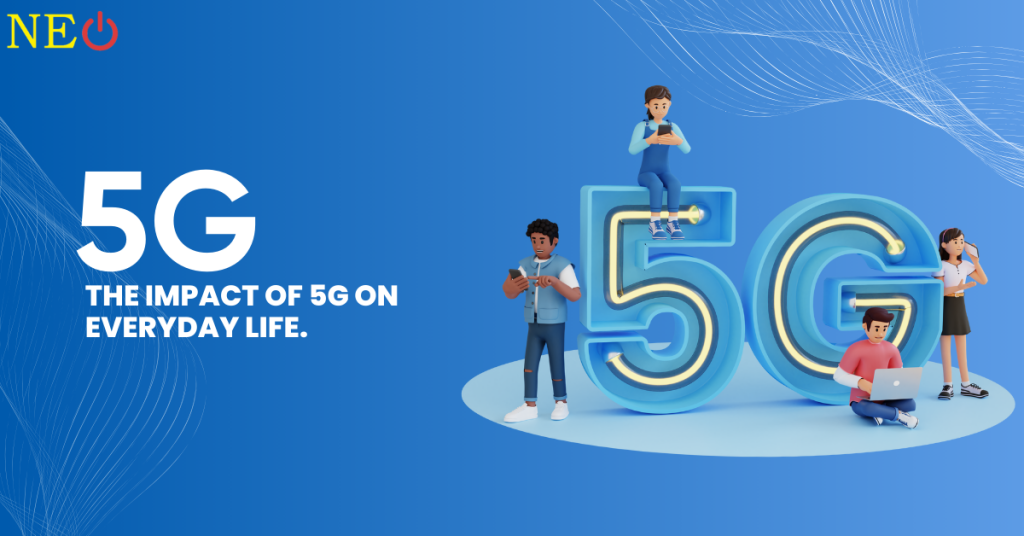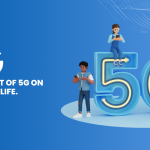The introduction of 5G technology has been nothing short of a revolution in the field of telecommunications and networking. As we migrate from 4G to 5G networks, the implications for connection and innovation are enormous. In this blog article, we'll look at the far-reaching effects of 5G technology on numerous industries, as well as how it's shaping the future of connectivity and innovation.
Understanding 5G Technology
5G, or fifth-generation wireless technology, provides a significant improvement in speed, capacity, and latency over its predecessor, 4G. While 4G enabled relatively fast mobile internet, 5G promises speeds up to 100 times faster. This boost in speed and capacity is accomplished through many significant technological advancements:
- Millimeter Wave (mmWave) Spectrum: 5G uses higher-frequency bands, including the mmWave spectrum, to transmit vast volumes of data at exceedingly fast rates. These waves may transport data at speeds of many gigabits per second.
- Massive MIMO (Multiple Input, Multiple Output): 5G networks use improved antenna systems to transmit data to multiple devices at once. This not only increases performance, but also lowers latency.
- Network Slicing: With 5G, network resources may be virtually sliced to serve specific applications such as self-driving cars, smart cities, and IoT devices. This ensures that each application receives the maximum performance that it demands.
- Low Latency: 5G networks offer substantially lower latency than 4G, often less than 1 millisecond. This is critical for real-time applications such as augmented reality (AR), virtual reality (VR), and remote surgical procedures.
Impact on Connectivity
- Improved Mobile Connectivity: The biggest immediate benefit of 5G is quicker and more dependable mobile connectivity. This means you may download and upload large files, stream high-definition videos, and use bandwidth-intensive programs on your mobile devices without any issues.
- Internet of Things (IoT): With its low latency and large capacity, 5G is suitable for IoT applications. This includes smart homes, smart cities, and industrial IoT, which require several devices to connect and interpret data in real time.
- Rural Connectivity: 5G has the ability to offer high-speed internet to underserved and remote areas, thereby closing the digital divide. The technology's reach and reliability open up new possibilities for remote employment, education, and telehealth services
Impact on Innovation
- Autonomous automobiles: 5G is a game changer for self-driving automobiles. With its low latency and high-speed data transfer, it allows for real-time connection between vehicles and infrastructure, improving safety and enabling sophisticated capabilities such as remote vehicle control.
- Healthcare: 5G technology significantly improves telemedicine and remote patient monitoring. Doctors can perform surgery remotely and monitor patients' vital signs in real time, regardless of geographical boundaries.
- Augmented and Virtual Reality: 5G realizes the full potential of AR and VR applications. Users may enjoy high-quality, immersive experiences with no lag, making it suitable for gaming, education, training, and other applications.
- Smart Cities: 5G networks support smart city ambitions by enabling better traffic management, environmental monitoring, and improved public services. These innovations create more sustainable and livable urban environments.
- Industrial Automation: Manufacturing and Industry 4.0 takes advantage of 5G's ability to connect and control machinery in real time. This leads to better efficiency, decreased downtime, and cost savings.
Challenges and Considerations
While 5G technology has great promise, there are several problems and factors to bear in mind.
Infrastructure Deployment: The introduction of 5G necessitates a significant infrastructure upgrade, including the construction of small cells and base stations. This can be an expensive and time-consuming procedure.
Spectrum Allocation: The allocation of spectrum for 5G can be difficult, with several industries competing for access. Balancing the needs of various stakeholders is critical.
Security and Privacy: As connectivity grows, security and privacy problems become more prevalent. To combat cyber threats, 5G networks must adopt strong security measures.
The introduction of 5G technology is expected to transform connectivity and innovation across a wide range of industries. Its promise of high-speed, low-latency communication is creating new possibilities that were previously deemed science fantasy. As 5G networks spread and mature, we can expect a surge of novel applications that will change the way we live, work, and interact with our surroundings. It's an exciting time to be at the forefront of this technological revolution, and the full scope of its impact is yet to be seen.









